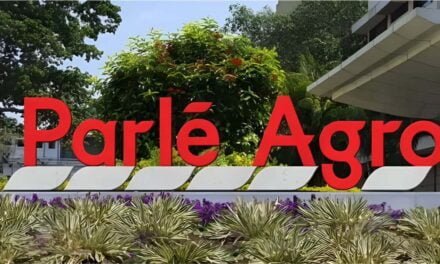Invented in 1809, canning food revolutionized food preservation. Canned foods remain a global favorite for their convenience, durability, and variety, meeting the needs of busy lifestyles. The demand for canned food is increasing day by day on account of rise in Per Capita Income, urbanization, lifestyle, and growth of organized retailing writes Kishan Makani.
Canning was invented in 1809 by Nicholas Appert. The process proved moderately successful and was gradually put into practice in other European countries and in the United States. Glass containers were used at first, but they proved bulky, costly, and brittle. Early can-making was slow and expensive; sheets of tin were cut with shears, bent around a block, and the seams heavily soldered. A good tinsmith could make only about 60 No’s cans a day. The industry began to assume importance with the invention in 1847 of the stamped can. Because of the food requirements of soldiers during the U.S. Civil War, considerable amounts of canned meats and vegetables were produced. Salmon from the Columbia River was canned in 1866 and salmon from Alaska in 1872.
Why Canned Foods are Popular?
Canned food requires less preparation time and are considered convenient to use, which has led to its popularity in the Indian and global market. The demand for sealed and tamper-proof steel container food is high, as they protect food from harmful bacteria. Also, due to the hectic and busy lifestyles of consumers, canned food is expected to gain more importance. The process of canning helps in preserving the quality of food products and preventing food spoilage, which subsequently increases their shelf life up to 2 years.
Most vegetables, fruits, meat, and dairy products, and processed foods are stored in tin cans, but soft drinks and many other beverages are now commonly stored in aluminum cans, which are lighter and but not rust. The tabs used in pop-top cans are also made of aluminum.
INVESTMENT
An entrepreneur can start Canning Line with the investment from 50 Lacs to 5 crores; India has good number of supplier for canning Machinery locally. (Project cost may vary upon machinery supplier and technology {Manual, Semi-Automatic and fully Automatic}).
AREAD REQUIREMENT
Area required in Canning Unit is starting from 1000 Sq. Meter to 8000 Sq. Meter; it may vary on produce basis. In the case of produce is fruit & vegetables, it requires more space for ripening & handling of raw material like Mango.
Major space require in the canning unit is raw cans &finished cans; for that preferably multi-story or mezzanine floor structure advisable; it totally depends upon the capacity and location of the project.
Process of Canning
Canneries are usually located close to the growing areas of the product to be packed since it is desirable to can foods as quickly as possible after harvesting. The canning process itself consists of several stages: cleaning and further preparing the raw food material; blanching it; filling the containers, usually under a vacuum; closing and sealing the containers; sterilizing the canned products; and labeling and warehousing the finished goods.
Cleaning and washing usually involve passing the raw material through Washing Tank or under high-pressure water sprays, after which vegetable or other products are cut, peeled, cored, sliced, graded, soaked, pureed, and so on. Almost all vegetables and some fruits require blanching by immersion in hot water or steam; this process softens the vegetable tissues and makes them pliable enough to be packed tightly, while also serving to inactivate enzymes that can cause undesirable changes in the food before canning. Blanching also serves as an additional or final cleansing operation.
The filling of cans is done automatically by machines; cans are filled with solid contents and, in many cases, with an accompanying liquid (often brine or syrup) in order to replace as much of the air in the can as possible. The filled cans are then passed through a hot-water or steam bath in an exhaust box; this heating expands the food and drives out the remaining air; thus, after sealing, heat sterilizing, and cooling the can, the contraction of the contents produces a partial vacuum within the container. Certain products are vacuum-packed, whereby the cans are mechanically exhausted by specially designed vacuum-can sealing machines.
Immediately after the cans are exhausted, they are closed and sealed; a machine places the cover on the can, and the curl on the can cover and the flange on the can body is rolled into position and then flattened together. The thin layer of sealing compound originally present in the rim of the cover is dispersed between the layers of metal to ensure a hermetic seal. The sealed cans are then sterilized; i.e., they are heated at temperatures high enough and for a long enough time to destroy all microorganisms (bacteria, molds, yeasts) that might still be present in the food contents. The heating is done in Horizontal/ Verticalretort, usually using temperatures around 240°F (116°C). The cans are then cooled in cold water or air; after that, they are labeled and packed in corrugated boxes.
Food Canning in India
In India, mainly canning industry is seasonal; In Western India, most of canning unit is working only in the season of Mango, while in J&K state cherry is the season for canneries. In rest of the month small scale canning industry manufacture product like pickle/ chutney/Ketchup. In North East states canning used for Pineapple & Passion fruit.
With the addition of RTE Meals, Traditional Cuisine, Sauces, Soups, and other Vegetables entrepreneurs can generate more income in off-season. Following is the list of canned product induced but not limited.
Fruit Pulp: Mango Pulp, Tomato Puree, Passionfruit Pulp, Guava Pulp, Pineapple Juice, Orange Juice.
Whole/ Sliced/ Diced Fruits & Vegetable: Lychee, Cherry (Regular/ Pitted), Pears Halves, Plum, Pineapple Sliced/ Diced/ Tidbits, Mango Sliced/ Diced, Red Paprika, Sweet Corn, Green Peas, Baby Corn, Gherkin Pickle, Apricot, Berries, Asparagus, Mushroom Slice, Jalapeno Slice, Fruit Cocktail etc.
Sauces/ Soups: Tomato Sauce/ Soup, other Vegetable Soup, Chicken Soup, etc.
Indian Traditional Cusine/ RTE Meals: Dal Makhani, Chana Masala, Sarson ka Saag, Mutter Paneer, Spanich Puree, Pavbhaji Curry, Rasgulla, Gulab Jamun and many other traditional cuisines.
Canned Food Market Insights
The global canned food market is expected to reach USD 118 billion by 2023, at a CAGR of 3.8%, during the forecast period (2018-2023). The growing trend in the canned food market is innovations in packaging. With an increase in demand for chemical-free canned foods, manufacturers are focusing on innovations in packaging. Many brands of canned food products have started offering food in BPA-free containers.
The growing trend for organic canned fruits and vegetables and focus on social media marketing and promotions further adds to the revenue-generating factors in the global canned food market.
However, major restraining factors affecting the global canned food packaging market are the availability of alternative packaging solutions, high cost of metals, the introduction of polyethylene terephthalate, and high-density polyethylene materials. Also, canned foods are subject to the risk of BPA, which is hazardous to health.
Factors, such as innovations in packaging, high investment in R&D, and increasing demand in the Asia-Pacific region, reflect the growth opportunities for the global canned food market.

Canning Industry Opportunity in India
- Modernization of Existing Small Scale Canning Industry
- Increase income generation by introducing of New Products
- Cluster-based canning industry concept with the name of one Brand should be implemented for global marketing and expansion as there is well-known phrase la?ks’kfädfy;qxs.
- Food Safety standards must be implemented properly to increase our nation’s reputation Worldwide
- Adoption of Modern Retort Technology
Central Government Financial Assistance
Government is providing incentives to double the farmer’s income through value addition and reduction of food wastages. It will help entrepreneurs in reducing the payback period of their business.
Central Government: Ministry of Food Processing Industries (MoFPI), Govt. of India provides Grant-in-aid in General Areas: 35%; ITDP (Tribal), North-East States, Himalayans States: 50% on Plant & Machineries & Technical Civil Work subject to a maximum of Rs. 5 Crore.
For Cluster-based Food Processing Project; MoFPI provides Grant-in-aid @ 35% in General Areas and @ 50% for North East States, Himalayan States, ITDP areas projects subject to Maximum of Rs. 10.00 crores
Basic Enabling Infrastructure: Roads, water supply, power supply (Solar Power Plant, DG Set, Bio-mass Power Plant), drainage, ETP, Common Office Building, Training Centre, Display Centre, etc.,
Core Infrastructure/ Common facilities: Warehouses, cold storage, Frozen Store, IQF, Ripening Chamber, Blast Freezer, Plate Freezer, Reefer Truck, Tetra Pack, F&V sorting, grading, Grains Sortex, etc. Minimum Area require is 10 acres.
The author is a Food Technologist having several years of experience in food processing infrastructure development projects. He is a partner at Alliance Engineering Consultant, Gandhinagar, Gujarat.

Have a news or topic to share with industry? Write to us editorial@pfionline.com
















